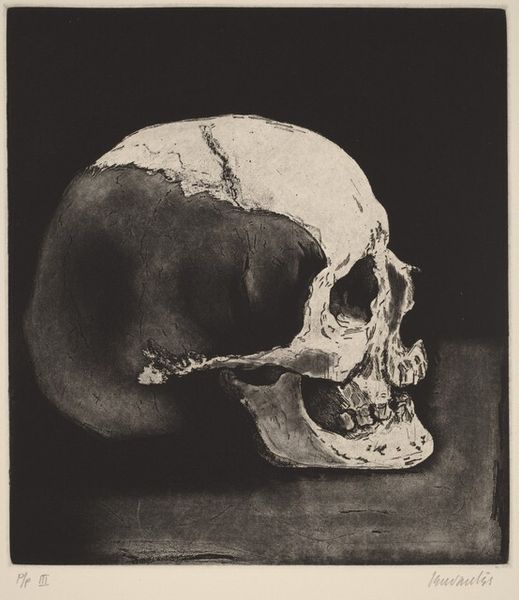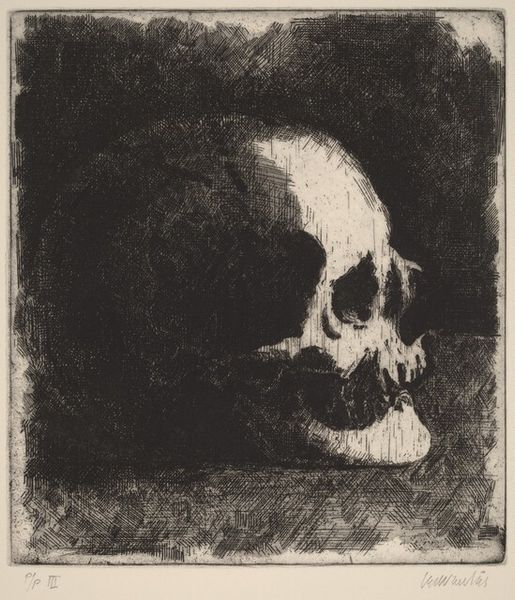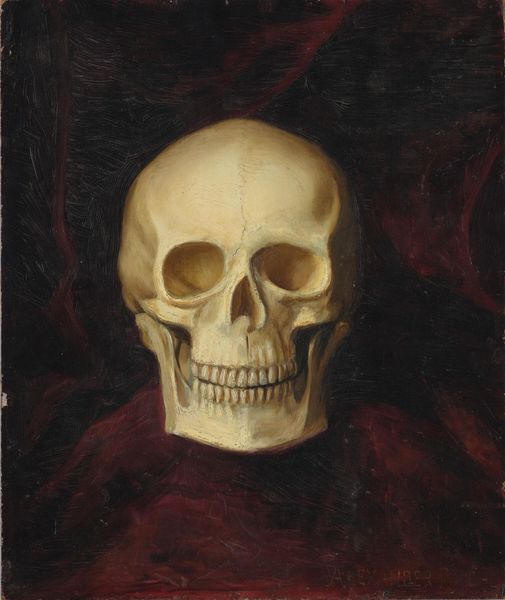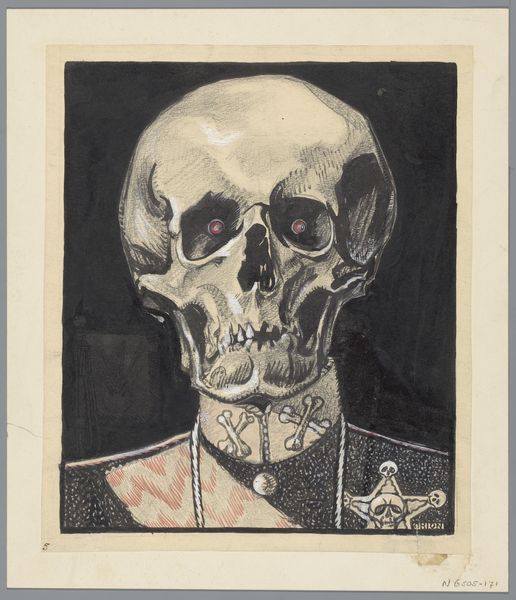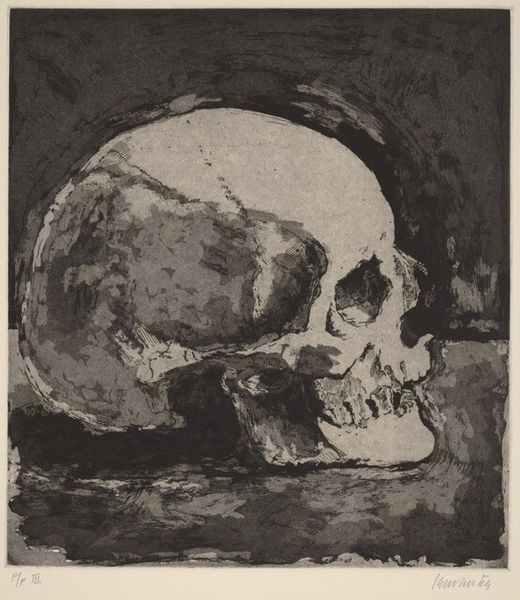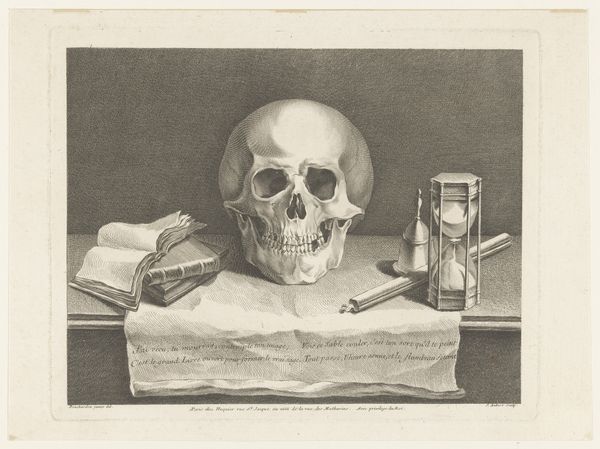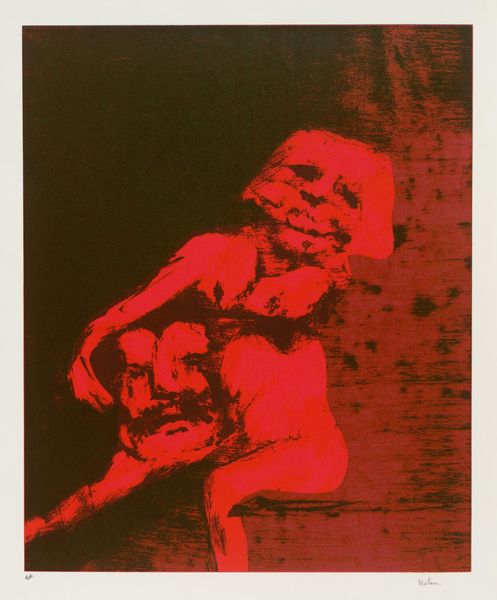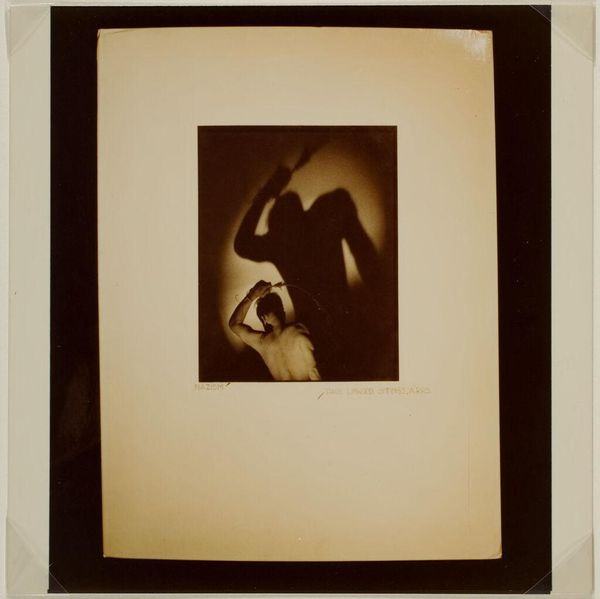
Dimensions: support: 476 x 470 mm
Copyright: © Robert Mapplethorpe Foundation | CC-BY-NC-ND 4.0 DEED, Photo: Tate
Curator: Mapplethorpe's "Skull" is a striking, intimate photograph, really a memento mori for our times. What jumps out at you first? Editor: Immediately, the high contrast of the stark black and white. It feels theatrical, almost staged, playing with light and shadow in ways that feel very deliberate. Curator: Absolutely, Mapplethorpe masterfully uses light to sculpt the skull, giving it both weight and an almost ethereal quality. Given Mapplethorpe's life and work, how does that symbolism resonate? Editor: Knowing Mapplethorpe’s biography, particularly his struggles with and eventual death from AIDS, this skull reads as a confrontation with mortality, and a potent symbol of the fragility of life, particularly within the queer community during the AIDS crisis. Curator: It's a stark reminder that beauty and decay can coexist, reflecting on mortality with a fierce, unflinching gaze. Editor: It’s also a haunting reflection on the sociopolitical climate of the time, and a powerful statement on visibility, resilience, and the enduring power of art.
Comments
Join the conversation
Join millions of artists and users on Artera today and experience the ultimate creative platform.
tate 7 months ago
⋮
In this black and white photograph a human skull sits on a horizontal ledge near the centre of the image, angled so that it is in three-quarter profile facing towards the right-hand edge of the print. The eye sockets look upwards towards a light source outside of the picture from which beams of bright light stream forth, bisecting the image diagonally from the top right-hand corner to the lower left-hand corner. As a result, the upper half of the photograph is cast in shadow while the lower half is bathed in white light. The angle at which the light is directed emphasises the contours and crevices of the skull and its overall three-dimensionality, but also serves to flatten the space behind the skull by creating perfectly straight diagonal lines of light and shadow.

